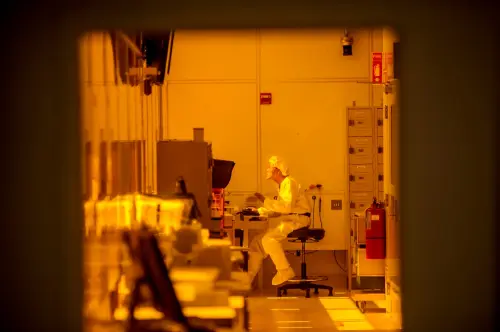The Build Back Better bill has stalled. On one point, we agree with Senator Joe Manchin that it is time for Congress to start with a “clean sheet of paper” by evaluating how each policy in the legislation betters American society. In this context, the portions in the bill targeting children and families are an imperative. They offer a particularly strong return on investment and just released data underscore this point. A little cash goes a long way to support children’s short- and potentially long-term outcomes.
A research paper was released yesterday in the Proceedings of the National Academy of Science (PNAS) from the Baby’s First Years study. In an ongoing randomized controlled trial, 1,000 mothers from disadvantaged backgrounds are assigned to either a high-cash gift group ($333 per month) or a low-cash gift group ($20 per month). Participants receive this support in the form of a debit card and may spend the funds however they choose. Mothers live in cities across the U.S.—the Twin Cities, New Orleans, Omaha, and New York City.
After mothers received just 12 months of cash gifts funded by charitable foundations, lead author Dr. Sonya Troller-Renfree and her team measured infants’ brain activity using electroencephalography (EEG). What they found is game changing: Babies whose mothers were assigned to the high-cash gift group had more high-frequency brain activity compared to children in the low-cash group.
Previous research links this high-frequency activity to the development of thinking and learning. According to the team’s lead neuroscientist, Dr. Kimberly Noble, less than $4,000 a year “must have changed children’s experiences or environments, and their brains adapted to those changed circumstances.” In short, this is the first causal link between poverty and brain activity. There are numerous pathways through which the cash might be impacting children’s brains, and research is currently seeking to understand the mechanisms. And this is just the beginning—the cash payments are ongoing, with plans to directly assess children’s development at age 4.
What they found is game changing: Babies whose mothers were assigned to the high-cash gift group had more high-frequency brain activity compared to children in the low-cash group.
A separate facet of the Build Back Better bill aims to invest in education by addressing educator recruitment and retention. Again, the science shows that investments positively impact children’s development and that teacher turnover and retention directly relate to child outcomes. In particular, teacher stability in the earliest years is linked to higher social skills in kindergarten. Importantly, these skills go on to predict children’s academic outcomes. In a recent study led by Dr. Daphna Bassok, researchers asked how an initiative called the Teacher Recognition Program, made possible by federal funds, impacts teacher retention.
The program Bassok and her colleagues studied across the state of Virginia gave just $1,500 to eligible early childhood educators who on average made $12 per hour for working at least 30 hours per week with children from ages 0 to 5. After 8 months, the researchers checked in with the child care centers enrolled in the program and found that this meager amount of money cut the rate of teacher turnover by half. When asked about the additional support, teachers stressed how much the incentive assisted with things like groceries and bills.
American families are struggling. After the end of the child tax credit, which kept about 3.7 million children out of poverty just a month ago, families that were lifted out of poverty are once again feeling financial turmoil. A recent Organisation for Economic Co-operation and Development policy report shows that the United States has among the worst child poverty rates in the industrialized world. The data released this week and in the past month demonstrate conclusively that relatively minor investments in families and teachers can impact children’s growth trajectory. It is a small price to pay for a stronger future.
The Brookings Institution is committed to quality, independence, and impact.
We are supported by a diverse array of funders. In line with our values and policies, each Brookings publication represents the sole views of its author(s).










Commentary
A little cash goes a long way to support early childhood and development
January 25, 2022